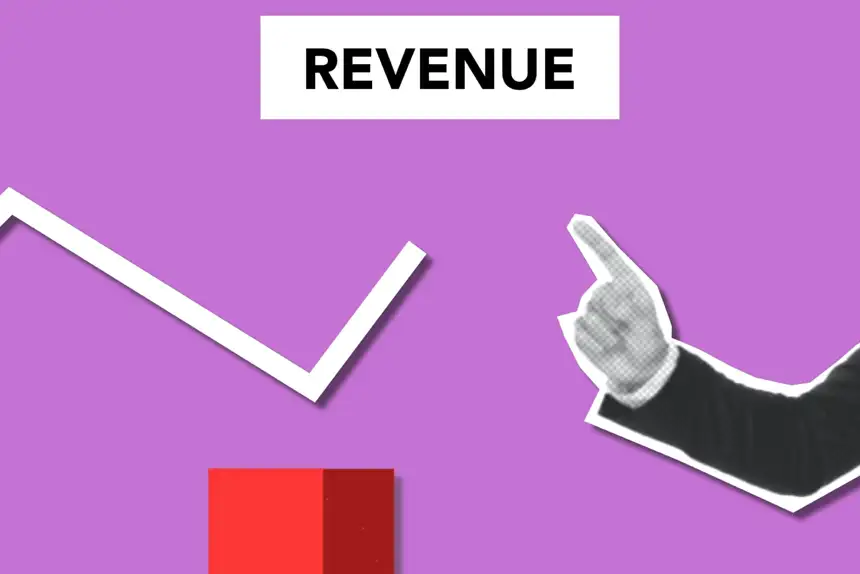Whatever your industry, as a business owner, finding capital is necessary to continue to grow your business. Find out how to choose the best Revenue-Based Financing.
Whether you are an established business owner with several years in business, or a fresh entrepreneur working on a startup, finding sufficient capital is necessary to invest in growth for your business. A conventional bank loan is a great source, but it can be difficult to obtain, often requires collateral, and can take a long time to secure. At the other end of the spectrum is private equity investment, which can be costly and difficult to get. Revenue-based financing is essentially a compromise between the two. This breakdown will include an overview of the best revenue-based financing practices with pros and cons as well as a comparison to other finance options.
What is Revenue-Based Financing?
With revenue financing, business owners receive funding and repay it as a small percentage of future sales. A percentage of revenue is repaid until the sum of the agreed advance and fees are returned. Payments are typically made monthly, but they vary in amount.

Structure
There are a couple of ways that this type of financing can be structured. One way is comparable to the structuring of long-term and short-term loans in the sense that the capital is provided in an agreed-upon sum. However, it differs from term loans in that the entire sum is not provided in one lump up front. The company has the option to access the capital whenever it is needed, and interest is not accrued until withdrawal. The concept is more akin to a line of credit or a credit card.
The distinguishing characteristics of a revenue-based financing structure are in how the company makes payments to the lender. Some examples of different repayment agreements are:
- Making payments until the capital source reaches an agreed-upon internal rate of return,
- Making payments until an agreed-upon final date is reached,
- Making payments until the repayment amount is reached.
The repayment is a predetermined number that is multiplied by the principal amount of the advance. The company will make a payment, usually monthly, of a percentage of that month’s revenue. If you have a great month followed by a slow month, your payment will vary, based on your performance. A term loan has fixed installments and a definitive deadline, whereas, the time it takes to pay off a revenue-based loan varies based on your sales.
Financing Example
To create a better understanding of this financing process, consider this breakdown of a hypothetical interaction between you and a capital source.. In this situation, your company needs $200,000 to invest in new equipment for a new product line that you plan to launch in the next quarter. A lender agrees to provide that capital and your agreement states that you will pay eight percent of your revenue each month until the final sum is reached. If you make $40,000 per month in revenue, your monthly payment would be $3,200. Of course, revenue will likely vary, but assuming you make roughly the same amount each month, you could expect to take between six and seven years to repay the loan. Keep in mind that these numbers are relatively small. This type of loan can deal in amounts of up to $2 million.
This is obviously a very oversimplified example, as there are other factors to consider. Depending upon the financial standing of your company, the lender may include changes in loan disbursement as you progress through repayment. Before even considering this funding, you will want to understand the repayment requirements.
Requirements
This section of the overview is particularly important to you, as a business owner. What qualifies a business for this type of loan? The qualifications for a revenue-based differ from the conventional bank loan or line of credit.
As you consider the avenue of RBF, ask yourself if your company meets the following requirements:
- You have no substantial debt, especially other loan obligations.
- Your revenue is consistent, and you have the financial statements to show it.
- Annual revenue is a minimum of $200,000.
You need to prove profitability, but you should be able to articulate a clear plan to promote and maintain it. Considering the nature of these requirements, promising businesses in a stable industry are frequently good candidates.
Rates and Terms
As previously discussed, rates and terms of revenue-based financing are routinely determined in the beginning. They are always in the form of a total loan sum, fees, and a percentage of monthly revenue. Rates are most comparable to a merchant cash advance or short-term loan.

What Are the Pros?
Revenue-based financing often provides more benefits for both lender and borrower than other options, specifically bank loans and venture capital:
- Lower personal obligations
- Access to larger amounts and funding is quick vs venture capital or bank loans
- Repayment is flexible, relieving the stress of meeting a fixed amount each month.
- The relationship between lender and borrower is healthier because both share a mutual focus.
- There is no dilution of equity; you retain ownership of the company.
- Repayment terms can be longer than other forms of financing.
Growth is the ultimate goal of any business, and the same can be said of this type of funding. It is also a great option if you want to avoid the lengthy application process of a conventional loan or do not have a strong credit score.
What Are the Cons?
Compared to other financing options, there are not as many cons for revenue-based funding. However, there are a few worth mentioning:
- Companies must have the revenue to participate, which makes this option more difficult to obtain for startups.
- Like merchant cash advances, this type of funding can be more expensive than traditional bank loans.
- Monthly payments are required
- There are no prepayment incentives, such as opportunities to avoid interest or discounts for paying ahead of a predetermined schedule.
You have to consider the pros and cons of each funding option before deciding what works best for your business. Revenue-based funding might be a better choice if you’re trying to grow quickly, but other options may work depending on how much time you have to pitch investors and fill out bank paperwork.

How Does Revenue-Based Financing Compare to Other Options?
There are a couple of advantages that revenue-based has over debt financing. For example, debt financing always involves interest and requires payments to be made regardless of revenue. It is, however, less costly and is generally more conducive to the needs of startups. The difference between using equity to access capital and using debt or revenue is that equity financing involves selling a portion of your company to strangers. The other two options are about borrowing money, and you retain ownership of the company. With equity financing, you relinquish some (or all) control in your business operations over to the lender. This process is significantly more complex and requires lawyers and accountants to complete it properly.
Is It Right for You?
There are many different types of financing available to small businesses. By now you probably understand that revenue-based financing is suitable for some companies and not others; as an entrepreneur, it’s important to know which type will work well with your company before diving into research about options! Consider this article’s requirements when deciding which one suits you best: Do you have an established revenue stream? Have you experienced steady growth or project that you will? Do you have your finances in order, and are you ready to present them to potential lenders?
Think about what you want for your company in the long term and evaluate what you want to achieve. With revenue-based financing, you maintain control of your company, but you are also obligated to repay the loan. The flexibility in repayment is an alluring characteristic of this type of financing, but you will want to review if it works well for your unique business situation.
Ultimately, if your motivation is growth, the benefits of remaining in control of your company and accessing capital without involving your personal assets are what make revenue-based financing appealing. Find out more about your financing options by visiting the Platform Funding website.
Sources:
- https://www.investopedia.com/terms/d/debtfinancing.asp
- https://flowcap.com/founders-guide-to-revenue-based-financing/
- https://corporatefinanceinstitute.com/resources/knowledge/trading-investing/revenue-based-financing/
- https://saratogainvestmentcorp.com/articles/revenue-based-financing/
- https://www.investopedia.com/terms/e/equityfinancing.asp


